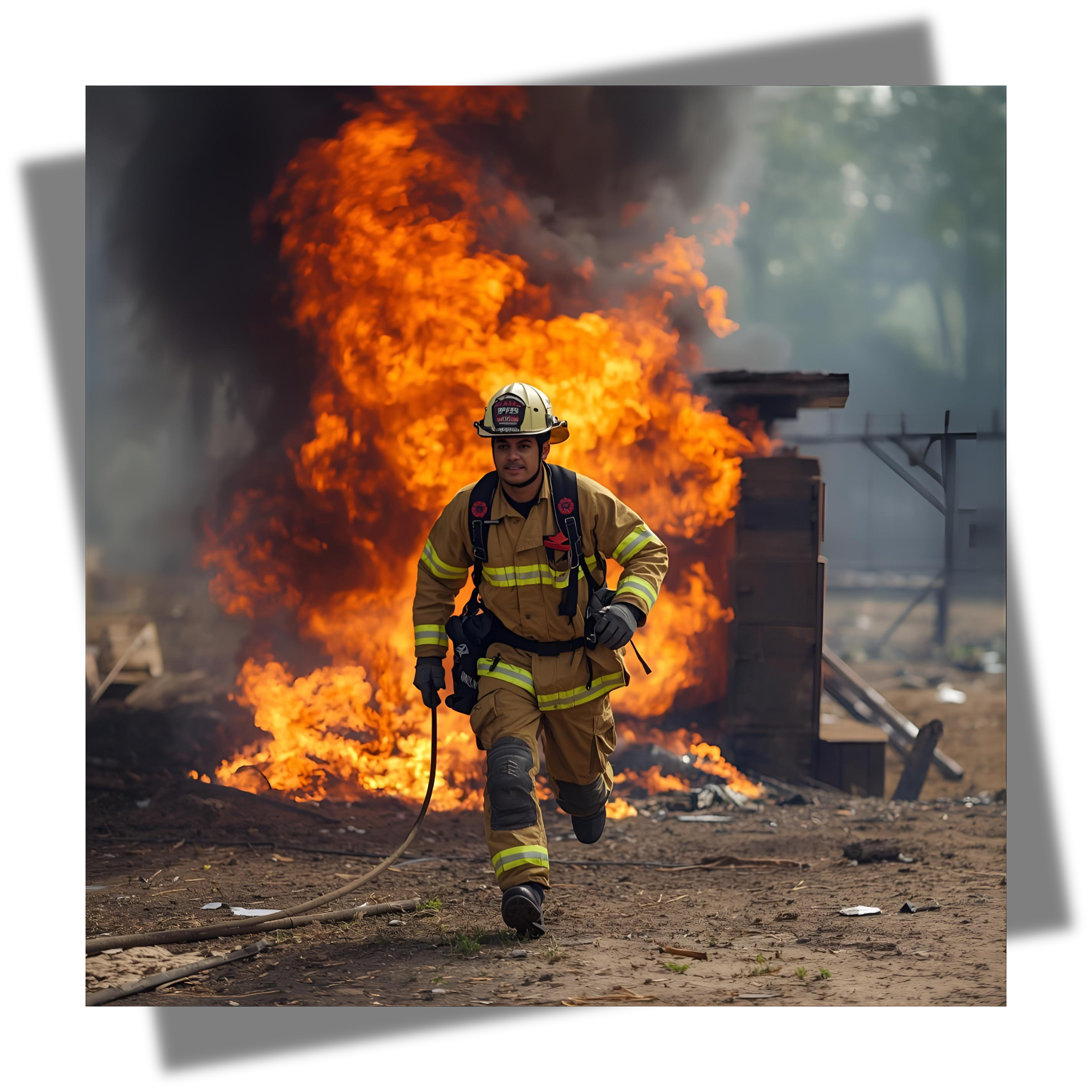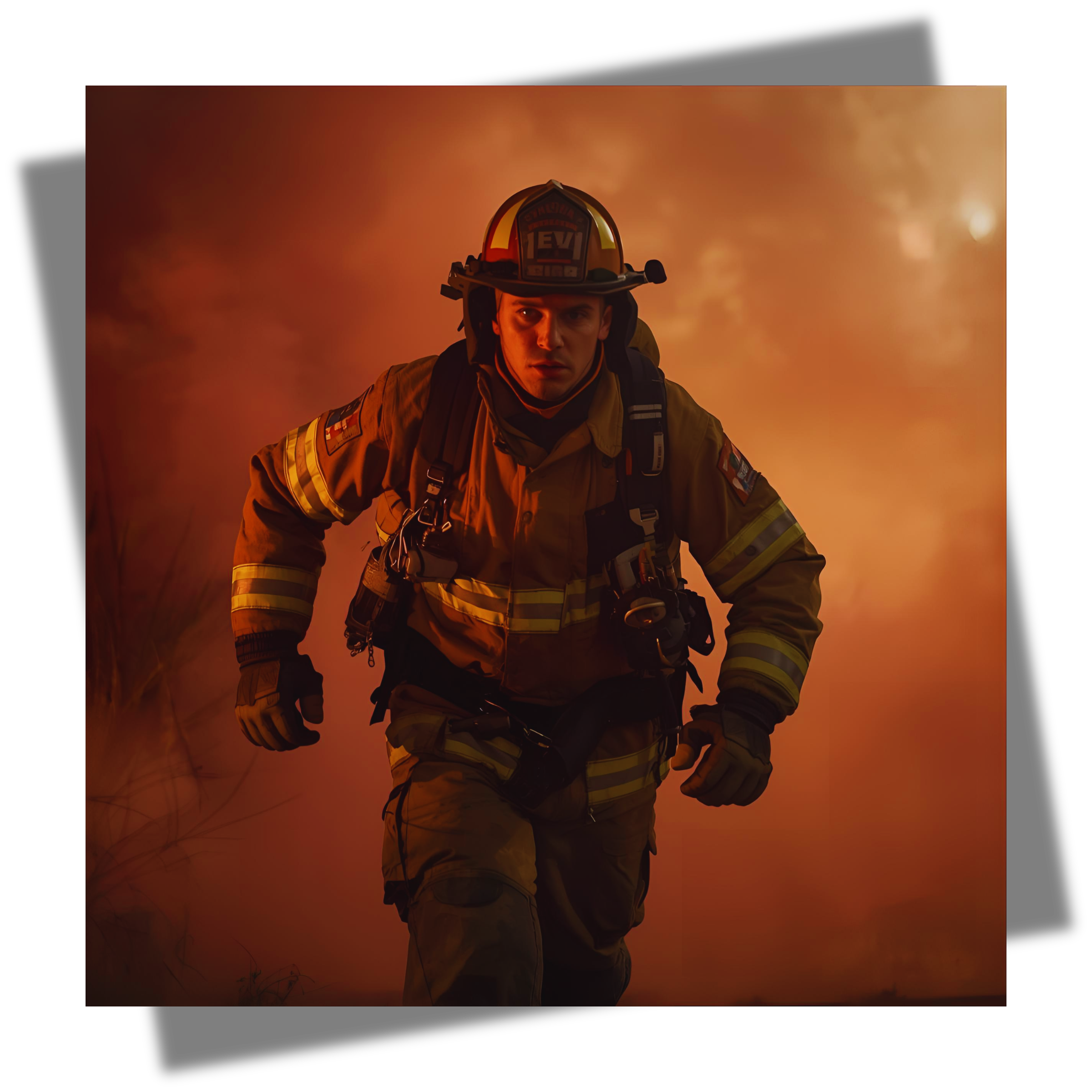Introduction
Firefighting is one of the most physically demanding professions in the world. Carrying heavy gear, climbing stairs with a hose pack, forcing entry, and rescuing victims all require strength that goes far beyond what most people ever train for. Firefighters aren’t training to look good in the gym — they’re training for survival, effectiveness, and the ability to protect others.
That’s why strength training is non-negotiable for firefighters. By building functional, job-specific power, firefighters can perform under extreme conditions and reduce their risk of injury. This article explores why strength training matters for firefighters, which exercises carry over best to the job, and how to build a program that keeps you strong, durable, and ready for anything.
Why Strength Training Matters for Firefighters
The demands of firefighting are unique. A firefighter may need to carry 50–75 pounds of gear, climb several flights of stairs, force open doors, and drag a victim to safety—all while working in extreme heat and low visibility. Strength provides the foundation to perform these tasks efficiently and safely.
Without adequate strength, firefighters fatigue faster, increasing the risk of mistakes or injury. Stronger firefighters not only protect themselves but also their crew and the community they serve. Strength is not just about personal performance—it’s about team survival.
Key Areas of Strength for Firefighters
Lower-Body Strength
The legs drive nearly every movement on the job: climbing stairs, carrying loads, and lifting victims. Squats, deadlifts, and lunges build the foundation firefighters rely on daily.
Upper-Body Strength
From pulling ceilings during overhaul to forcing entry, the upper body is constantly engaged. Push presses, bench presses, pull-ups, and rows all carry over directly to firefighting tasks.
Core Strength
A firefighter’s core is the link between upper and lower body strength. Strong abdominals, obliques, and spinal stabilizers protect the back during heavy carries, awkward lifts, and gear hauling.
Grip Strength
Perhaps one of the most overlooked areas, grip strength makes a huge difference. Firefighters must hold tools, drag hoses, and carry awkward loads for extended periods. Farmer’s carries, towel pull-ups, and dead hangs are essential training tools.
Best Strength Exercises for Firefighters
While almost any strength training provides benefits, certain exercises have direct carryover to the job. These include:
-
Back Squats and Deadlifts for full-body power and stability under load
-
Farmer’s Carries and Sandbag Carries to simulate carrying hose packs, equipment, or victims
-
Overhead Presses and Push Presses for forcing entry and overhead work
-
Pull-Ups and Rows for climbing, pulling, and hauling
-
Sled Pushes and Drags to mimic moving heavy gear or dragging bodies
Sample Firefighter Strength Program
Here’s a simple but effective weekly plan:
Day 1 – Lower Body
-
Back Squat: 4×6
-
Romanian Deadlift: 3×8
-
Walking Lunges: 3×12 each leg
-
Farmer’s Carry: 5×40 yards
Day 2 – Upper Body
-
Push Press: 4×6
-
Pull-Ups: 4×8
-
Barbell Row: 3×10
-
Sandbag Carry: 5×60 yards
Day 3 – Full Body/Work Capacity
-
Deadlift: 4×5
-
Sled Drag: 6×30 yards
-
Push-Ups: 3×20
-
Core Circuit (planks, side planks, medicine ball throws)
This type of program builds functional strength directly transferable to firefighting tasks.
Injury Prevention and Longevity
Strength training doesn’t just improve performance—it protects firefighters from injury. A strong core stabilizes the spine, strong legs prevent knee strain, and balanced upper-body training reduces shoulder injuries. With proper strength training, firefighters increase career longevity and reduce time lost to injuries.
Conclusion
Firefighting requires strength unlike any other profession. By focusing on functional lifts, carries, and job-specific training, firefighters can build the kind of power that saves lives—their own, their crew’s, and their community’s.
Strength training isn’t optional. It’s a responsibility. A strong firefighter is a safer firefighter, and investing in strength means investing in readiness.



